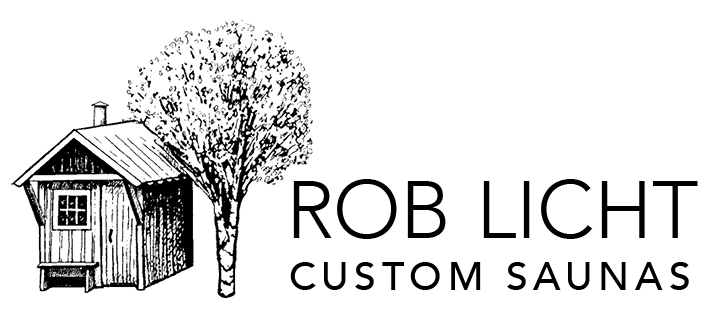Sauna building Class
Learn how to build saunas and gain expert knowledge from master builder Rob Licht in an intensive 4-day class experience
Dates: Thursday, October 3, 2024 — Sunday, October 6, 2024
This is a comprehensive class with demonstrations, lectures and some hands-on experience. We will cover many aspects of building saunas including:
- Design and layout of your sauna: Freestanding & Electric Saunas
- Selection of the proper wood and other materials
- Insulation principles
- Interior wood paneling
- The kiuas or sauna stove (emphasis on wood burning)
- Safe clearances and chimney installation
- Floor and stove wall masonry construction.
- Mobile saunas
- Benches, doors, windows and other sauna details
- Using the sauna: usage, custom and etiquette
- sauna culture, business, construction challenges and more… !
Class Fee:
$800 individual
$1500 couple/family rate
Location:
At the Shop of Rob Licht Custom Saunas
8 Verizon Lane, Unit 1, Lansing, NY 14882
Class Schedule:
Thursday: 12PM to 5PM
Friday: 9AM to 5PM, lunch provided
Saturday: 9AM to 5PM, lunch provided
Sunday: 9AM to 1PM
Throughout the intensive days we will have break-out work sessions, time to answer questions, and coffee breaks. There will be opportunities for socializing after class and the option to take sauna at the shop and by the lake. One evening, we will sauna and picnic at a local park on Cayuga Lake. Significant others are welcome to join us for this event.
Recommended prerequisite: We’re not covering basic carpentry (exterior framing), and basic metal working. If you lack these skills it is advised that you take a hands-on carpentry class.
About the Teacher: Rob Licht has been taking sauna for 45 years and has designed well over one hundred custom saunas. Rob readily dispenses his knowledge to students and hopes to share his enthusiasm and expert knowledge of sauna with you.
Rob Licht grew up near Ithaca, N.Y., inspired by the bucolic landscape of the Finger Lakes region. He fell in love with sauna and Finnish culture as a teenager at a local cross-country ski center run by a Finnish family. He has a Master of Fine Arts Degree from Cornell University and has been a practicing artist and teacher for over 30 years. He taught art at Ithaca College for 12 years and has also taught adult education classes in welding, art, and design. He began combining his love of sauna, his practice as an artist, and his skills acquired from working in the building trades into a sauna building business in 1995. Today sauna building is his primary focus and he is one of the leading east coast sauna builders and sauna building educator offering a plethora of information to his clients, and now students, from around the world.
Terms & Info: A $100 non refundable deposit is due at registration and payable via paypal or venmo. Your balance is due (via check in mail) a month ahead of time in order to attend the class. You will receive an email to pay the balance. In the event the class is under enrolled (6 or less), you will be informed and your deposit of $100 will be refunded. In the case the class is over enrolled we will put you on a waitlist and we will let you know a month in advance or sooner if you can attend. Class attendees will have the opportunity to buy our sauna building plans at 50% off. Class size will be limited to 12.
About the Shop: 3000 sq ft with 16 ft ceilings and two large overhead doors and outdoor spaces to ensure good air quality.
Lunch is included: Friday and Saturday. Coffee and snacks will also be available throughout the days of the class. We will accommodate basic dietary restrictions.
Sauna etiquette: About 4 people at a time. Bathing suits required and please bring 2 towels: one to sit on, one for drying off after cool-dip. Everyone will get a chance to sauna.



WHAT PEOPLE ARE SAYING…
“This was the best weekend. I learned so much and left feeling full of inspiration and conviction. We can do this y’all- the revolution is happening! I am so grateful to you, Rob and Scarlet, for working so hard to put together such a clear and digestible roadmap for all of us. And I am so grateful for having four days with the loveliest people to talk sauna. What a dream.” —Erin, NC
“What an amazing weekend of sauna immersion. It was something special to be in an intimate group of like-minded folk focused on something that brings us such joy. Rob and Scarlet so well prepared and so packed with knowledge and hands-on experience! I was so impressed with the smooth and thoughtful delivery of information. Possibly the biggest take away I got was that there are many right and not so right ways to do things, in the end sauna building is an art as much as it is a science, which is why my sauna is so authentic in the experience.” —Mark, MA

